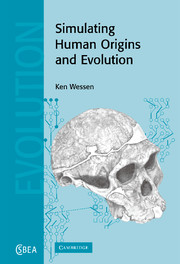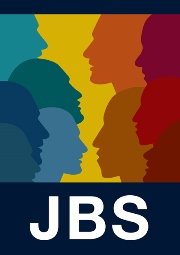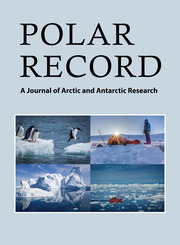Simulating Human Origins and Evolution
$35.99 (C)
Part of Cambridge Studies in Biological and Evolutionary Anthropology
- Author: K. P. Wessen, University of Western Australia, Perth
- Date Published: November 2011
- availability: Available
- format: Paperback
- isbn: 9780521397995
$
35.99
(C)
Paperback
Other available formats:
Hardback, eBook
Looking for an examination copy?
If you are interested in the title for your course we can consider offering an examination copy. To register your interest please contact collegesales@cambridge.org providing details of the course you are teaching.
-
The development of populations over time, and, on longer timescales, the evolution of species, are both influenced by a complex of interacting, underlying processes. Computer simulation provides a means of experimenting within an idealised framework to allow aspects of these processes and their interactions to be isolated, controlled, and understood. In this book, computer simulation is used to model migration, extinction, fossilisation, interbreeding, selection and non-hereditary effects in the context of human populations and the observed distribution of fossil and current hominoid species. The simulations described enable the visualisation and study of lineages, genetic diversity in populations, character diversity across species and the accuracy of reconstructions, allowing insights into human evolution and the origins of humankind for graduate students and researchers in the fields of physical anthropology, human evolution, and human genetics.
Read more- Author is well known in the field, and his research has attracted a lot of attention
- Author to host a website connected with the book, accessible from www.cambridge.org/9780521843997
Reviews & endorsements
"Wesson's book may help jump-start new work by researchers whose interests span the multiple levels on which natural selection acts to modfiy population persistence." - The Quarterly Review of Biology, Rebecca L. Cann, University of Hawaii
See more reviews"Wessen's simulation of human evolution will be a useful reference for phylogenetic systematicists, human geneticists, physical anthropologists and primatologists, and paleoarchaeologists who want to think deeply about both the power and limits of reconstructing human history from currently available data and with contemporary tools.
John R. Jungck, BioScienceCustomer reviews
Not yet reviewed
Be the first to review
Review was not posted due to profanity
×Product details
- Date Published: November 2011
- format: Paperback
- isbn: 9780521397995
- length: 258 pages
- dimensions: 229 x 152 x 15 mm
- weight: 0.38kg
- availability: Available
Table of Contents
1. Introduction
Part I. Simulating Species:
2. Overview
3. Simulation design
4. Running the simulation
5. Simulating diversity
6. Simulating migration
7. Discussion
Part II. Simulating Genealogies:
8. Overview
9. Simulation design
10. Simulating a single population
11. Simulating multiple populations
12. Adding genetics to the genealogy
13. Discussion
Part III. Bibliography and Index.-
General Resources
Find resources associated with this title
Type Name Unlocked * Format Size Showing of
This title is supported by one or more locked resources. Access to locked resources is granted exclusively by Cambridge University Press to instructors whose faculty status has been verified. To gain access to locked resources, instructors should sign in to or register for a Cambridge user account.
Please use locked resources responsibly and exercise your professional discretion when choosing how you share these materials with your students. Other instructors may wish to use locked resources for assessment purposes and their usefulness is undermined when the source files (for example, solution manuals or test banks) are shared online or via social networks.
Supplementary resources are subject to copyright. Instructors are permitted to view, print or download these resources for use in their teaching, but may not change them or use them for commercial gain.
If you are having problems accessing these resources please contact lecturers@cambridge.org.
Sorry, this resource is locked
Please register or sign in to request access. If you are having problems accessing these resources please email lecturers@cambridge.org
Register Sign in» Proceed
You are now leaving the Cambridge University Press website. Your eBook purchase and download will be completed by our partner www.ebooks.com. Please see the permission section of the www.ebooks.com catalogue page for details of the print & copy limits on our eBooks.
Continue ×Are you sure you want to delete your account?
This cannot be undone.
Thank you for your feedback which will help us improve our service.
If you requested a response, we will make sure to get back to you shortly.
×




